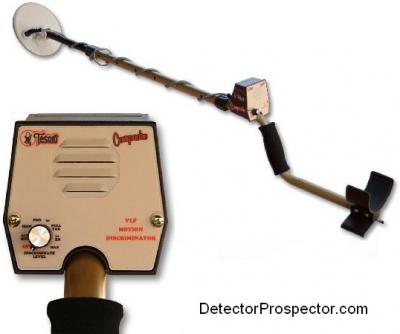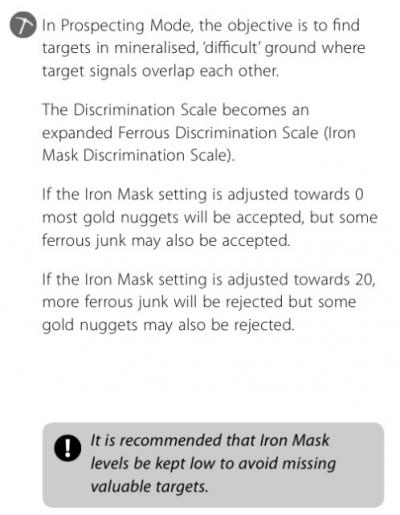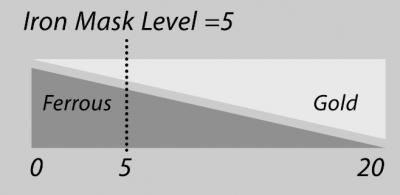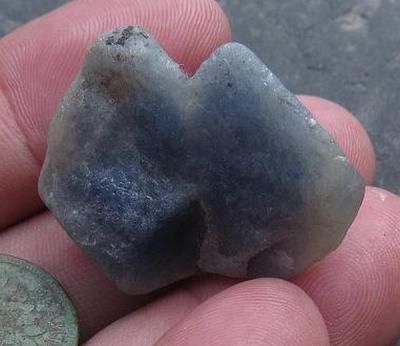-
Posts
19,761 -
Joined
Content Type
Forums
Detector Prospector Home
Detector Database
Downloads
Everything posted by Steve Herschbach
-
Screenshot of original Gonehunting settings at Link deleted since Findmall Forum update broke all old links Downloadable zips at http://www.dankowskidetectors.com/discussions/read.php?2,56856,56861
-
Welcome to the forum Road Dog! I enjoyed bilbos rant. Reminded me of me when I get wound up, which luckily is not often! Nothing works perfectly for everyone everywhere unfortunately. The day that happens I will need only one detector and right now I am struggling hard to cut it down to six.
- 32 replies
-
- minelab sdc 2300
- minelab gpz 7000
-
(and 1 more)
Tagged with:
-
I would say that based on experiences so far that if the GPZ 7000 has an Achilles Heel it is salt ground. Minimal salt levels would be indicated by ground that simply refuses to ground balance out that last couple inches near the ground. The more salt, the higher off the ground you will get signals that will not balance out. Minimal salt your can just lift the coil a bit. But if you are getting signals over a foot above the ground, or at waist height, there appears to be nothing you can really do that does more than slightly help. The problem does not go away through tuning. As has been mentioned before it really takes both salt and water to create the problem normally. A cup full of dry salt can't be detected. Add water and mix, and now a hot detector will pickup the salt water. Hot VLF detectors sound off on your hand because of this. So ground that was not bad one trip can be very bad the next if some rain has occurred in between. Here is a not happy customer in Oz very frustrated with the issue http://www.finders.com.au/forum/viewtopic.php?p=101734#101734 The early Minelab PI detectors also suffered in salt, but special "salt" coils and then later special settings helped tackle the issue. Salt conductivity mimics gold conductivity. The only way you can get rid of salt signals is to eliminate the overlapping gold signals. Still, if a machine is non-functional due to noise, doing this and still getting the other gold that falls outside the salt range it a preferable option. Right now if a person was going to really be getting into a lot of salt situations, another machine may be the way to go. The GPX series obviously handle salt areas well. I kept my ATX specifically for dealing with any salt situations I ever encounter that might foil my GPZ though I have not had to go there yet. There are other possible options, even the CTX 3030, that can be considered. My take is pretty simple. The GPZ is crazy powerful, and in the current form salt ground may therefore be an issue. I have never yet found one detector that is perfect at everything and so no big shock to me. It may be some future GPZ version sports a special salt mode and that would be great. But if it does, it will then be no better than any other detector that ignores salt ground. I plan on more tests regarding this in the future and will report my findings at a later date.
- 32 replies
-
- minelab sdc 2300
- minelab gpz 7000
-
(and 1 more)
Tagged with:
-

We Need A New Pinpointer Design
Steve Herschbach replied to Steve Herschbach's topic in Metal Detector Advice & Comparisons
The Compadre normally comes hard wired with an 8" or 5.75" coil and at 12kHz is moderately hot on gold. Not bad but not great either. Good detector though, best little single knobber on the market. -

We Need A New Pinpointer Design
Steve Herschbach replied to Steve Herschbach's topic in Metal Detector Advice & Comparisons
Hi John, Thanks but no. I am not looking to make something. I am opening the discussion so my friends at First Texas, Garrett, Makro/Nokta, Minelab, Tesoro, and White's can all mine it for ideas. I do not want to make it or sell it- I want them to make it and let their dealers sell it. -

Healing Our Heroes Gold Panning Adventure
Steve Herschbach replied to Sourdough Scott's topic in Detector Prospector Forum
What a great idea - kudos to all involved! -

We Need A New Pinpointer Design
Steve Herschbach replied to Steve Herschbach's topic in Metal Detector Advice & Comparisons
Me too! -
It only makes sense to copy success. Garrett scored a home run with the original Garrett pinpointer, and now everyone is falling all over themselves trying to cash in on Garrett's success. I have used a lot of them and at this point it is getting a bit silly. Some are missing the point in that what really makes the Garrett unit great is the simplicity. Some of the new versions are suffering from feature creep, kind of like Microsoft Word and all those functions you really do not need. The real problem as I see it is I do not need version 20 of the same old thing. How about somebody do something different? I know what lots of us in PI detecting land want. We want something with far more punch than a regular pinpointer first. Second, iron disc would be great. When I was in Australia I hit a small nugget at ridiculous depth down into true hardpan. Folks, what once was gravel was now rock. JP was helping me chisel down to it. Finally he went to his truck and got a rare device. Coiltek once made a 3" probe/coil for the SD/GP pulse detectors. Just hook up in place of your main coil or use a switch box. This 3" PI coil packed some real punch and was a real help in finding that nugget. The problem with the Coiltek probes is they were too cumbersome to really run attached full time to the detector, and so usually were left in a truck or at best carried in a backpack. Then swapped out with the main coil to be used. This means they usually got left behind and were not around when you needed them. And they were brand and model specific. Finally, no discrimination. Many PI users have worked in tandem with a VLF in trashy areas, marking targets with the PI and then retrieving with the VLF. I have often trudged back to my truck for a VLF when digging an extra deep junk target in tailing piles. A VLF with a small coil and discrimination is a real aid in trashy ground, especially tailing piles. But again this is an unwieldy solution often not available when you need it. I even went so far as to build mini VLF detectors as shown at http://www.detectorprospector.com/forum/topic/980-tesoro-silver-umax-pinpointer-conversion/ and http://www.detectorprospector.com/forum/topic/1028-fisher-gold-bug-2-pinpointer-conversion/ Even then however these are expensive propositions bulky and with too many features for what I really want. But it shows the need. There is a company that could do something almost overnight to address this market - Tesoro. Unfortunately listening to customers is not their strong suite so I have not wasted any time trying to lobby them with this idea, but here it is. The Tesoro Compadre. This is a complete single knob VLF detector that sells for ------ $160.00!! That's right folks, less than some of these hand held pinpointers. Now what it needs is a small 100% plastic pistol grip and a 3" or 4" coil. Yes, they had one of those off the shelf also they could use. All the little coil needs is to run a super short cable up the super short rod and hardwire into the control box. This should make the unit even less expensive but lets be generous - I would still pay $160 to get one. One knob, variable discrimination, single 9V battery. It would look almost identical to my Silver uMax version only no metal in the handle, no exposed cable, and one knob. It would blow away every pinpointer on the market. Alternative. That Coiltek 3" coil direct mounted to a PI control box of similar design. No disc but more punch, more ability to ignore ground. That's my ideas. What do you want? Be realistic - asking a Garrett Pinpointer to have the depth of a 3" coil will not happen. What do you think we need still in the pinpointer market? If you have a pinpointer, what do you like about it? What do you not like about it?
-
Not too long ago I posted about converting a Tesoro Silver uMax into a pinpointer at http://www.detectorprospector.com/forum/topic/980-tesoro-silver-umax-pinpointer-conversion/. I finally sold the Silver uMax, but I kept the shortened rod and put the slip mount for a Gold Bug 2 on it. This way I could convert my Gold Bug 2 into a similar setup which I still have today. I put it together this morning just to show it to you! It is a bit unwieldy with all the extra cable but it actually works just fine. The bent coat hanger is just a hook for hanging it off my belt. The entire unit is 16" long.
-

Iron Stained Gold And Hammered Coin Settings MXT
Steve Herschbach replied to auminesweeper's topic in White's Metal Detectors
Well, it is something to do with the composition of the steel. Stainless steel for instance is difficult for detectors due to having both poor conductivity and low magnetic properties. This being a hardened steel something similar is going on. I had you check the ground balance to see if the metal was acting similarly to mineralized ground and being balanced out to some degree. Could be all of the above but by definition metal detectors pick up highly conductive or items with high magnetic permeability so this screw lacks both those properties. -

Iron Stained Gold And Hammered Coin Settings MXT
Steve Herschbach replied to auminesweeper's topic in White's Metal Detectors
Try manually varying the ground balance on the GMT both up and down and see if it changes anything. -

Iron Stained Gold And Hammered Coin Settings MXT
Steve Herschbach replied to auminesweeper's topic in White's Metal Detectors
Another well illustrated example is for the Minelab X-Terra 705 Iron Mask, which also uses a 20 point overlap. -

Iron Stained Gold And Hammered Coin Settings MXT
Steve Herschbach replied to auminesweeper's topic in White's Metal Detectors
Good post John, thanks. A setting of two was always sort of a default "max" setting for me but it is a very fuzzy setting. If people ask these days I say 1.5 - 2.0. The borderline between ferrous and non-ferrous overlaps. A lower setting gets most all the non-ferrous but will give false positives on quite a bit of ferrous stuff also. A high setting will eliminate nearly all ferrous but also quite a few non-ferrous targets. The mix is solely dependent on the ground mineralization and the type and number of ferrous and non-ferrous targets in the ground. The coil type is critical. A concentric coil has a different ferrous response than a DD coil for instance that is very dependent again on the level of ground mineralization. That is why it is dangerous to fall into the habit of using any particular setting, though I have been plenty guilty of that myself. Best practice is to always set a disc control very low and if you find yourself digging too many ferrous items slowly tweak it upwards. If you are hardly digging any ferrous than go lower. Too many people hate digging any ferrous targets at all and if you set to eliminate all ferrous it is 100% for sure that you are passing on many good targets. The display on the Garrett AT Gold shows the overlap very well. A setting of 30 gets most of the gold but also has you digging some ferrous. 50 eliminates most of the ferrous but misses a lot of gold. 40 is a default average setting. But again, it totally depends on the mineralization and target mix. In high mineral ground with small gold a setting of 40 may miss nearly all the gold but calling it ferrous. This also highlights how many newer detectors are using expanded ferrous ranges to allow for better target resolution. The MXT has a very narrow and finicky ferrous range to work with. Of course many people would just say dig it all. But that is easier to say than do in the middle of an old mining camp or a field in Europe. -
Hi John, That is generally how I hunt with detectors like the F75, Gold Bug Pro, FORS CoRe, etc. in other words I hunt in all metal and let the VDI be my guide as to whether to dig or not. I find it is easier for my ear to catch the simple broad responses in mono tone all metal rather than trying to listen to tones. I only go to a dual tone mode when cherry picking. If I was to use an MXT these days I also would probably be running in Prospect mode.
-

XP Deus ByeBye, GB-2 & TDI-SL Hello
Steve Herschbach replied to Ivansgarage's topic in Metal Detector Advice & Comparisons
We did the same with a Gold Bug 2. Dropped it in the creek, killed it dead. Dried it out, worked fine and never had a problem with it. Did the same with a GP 3000 off a beaver dam - thankfully it was not turned on or would probably have been a different ending. But dried it out with no ill effects. Fresh water is not likely to hurt a detector if it is properly dried in short order. I even flooded a Surfmaster PI with salt water, flushed it out with fresh water, and dried it with a hair dryer, and all was fine. -

The Sheer Genius Of The XP DEUS
Steve Herschbach replied to Steve Herschbach's topic in XP Metal Detectors
Any regular coil over $300 I feel like I am paying too much. -
If you are talking about the Relic Mode tone for the all metal channel the truth is I did not use it as much as I should. Early on in my use of the MXT years ago when prospecting tailing piles at Ganes Creek it was a rather competitive situation not unlike an organized hunt. The race was on to cover ground and quickly recover targets, so I fell into the habit of just chasing the clear high tone non-ferrous targets. It was not until later that I zeroed in on the benefits of mixed mode prospecting and by then I had moved on the the F75. However, one guy who recovered many pounds of gold at Ganes Creek with the MXT did so by learning the machine to the max and employing the Relic Mode third tone to full effect.
-
-
-
I fixed the broken link to Randy's free book above. Pinpointing is covered starting on page 64
-

XP Deus ByeBye, GB-2 & TDI-SL Hello
Steve Herschbach replied to Ivansgarage's topic in Metal Detector Advice & Comparisons
You want me to put my Gold Bug headphones in a fish bowl? Sorry Hobo, just messing with you. Technically speaking the Deus coil IS the metal detector, and as such is nearly indestructible. The controller or headphones with integrated controller are not the detector itself, and can be stowed separately and safely. -

XP Deus ByeBye, GB-2 & TDI-SL Hello
Steve Herschbach replied to Ivansgarage's topic in Metal Detector Advice & Comparisons
It is not that the DEUS is not durable. It is that it seems delicate and so it is a perception thing. I found myself not wanting to toss it in the back of a truck to roll around like I might do with other detectors. I can appreciate why so many people like the DEUS but like the V3i it is massive feature overkill if all you want to do is look for gold nuggets. That is why I sold mine to Ivan! -
Almost forgot - download this free book "Understanding Your X-TERRA" by Randy Horton It is specifically on the 705 but nearly everything applies to the 70 as well.





